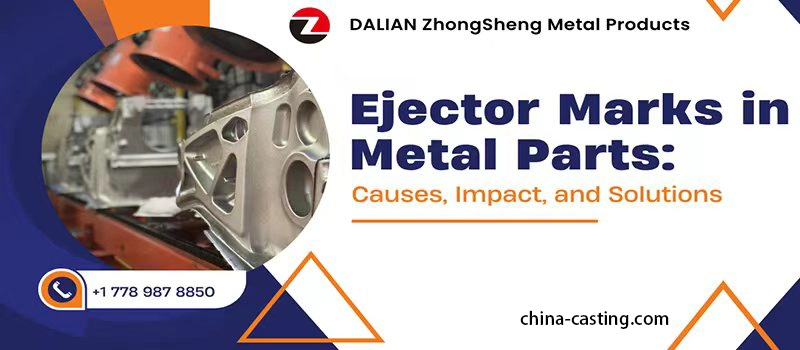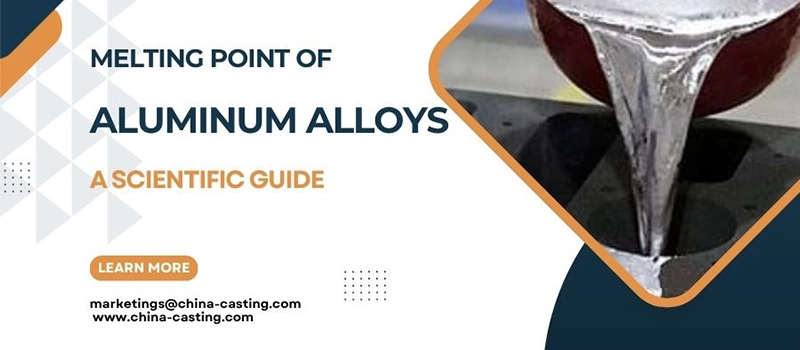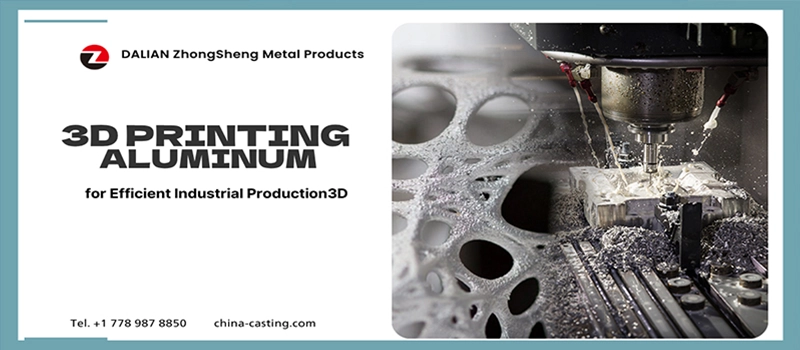Many people talk about the sheet metal fabrication processes, but few truly understand what happens between a flat metal sheet and a finished, functional part. Without a clear grasp of the core steps, it’s easy to get lost in technical jargon or miss important cost and quality factors.
Once you understand the six core sheet metal fabrication processes — from cutting and punching to welding and riveting — you’ll be able to communicate better with suppliers, assess production timelines, and evaluate part feasibility with confidence.
In this article, I’ll guide you through each key sheet metal fabrication process, breaking them down by definition, types, tools, and advantages — so you can fully understand how your metal parts are made.
Cutting – The First Step of Every Sheet Metal Fabrication Process
Cutting is the starting point in any sheet metal fabrication process, where large metal sheets are precisely divided into smaller, workable pieces. This is a foundational step — because every bend, hole, or weld depends on accurate dimensions from this stage.
What Is Cutting in Sheet Metal Fabrication?
Cutting refers to the removal or separation of material from a metal sheet along defined lines to form blanks or preforms. These pieces are later shaped, joined, or assembled through further fabrication processes.
It’s the first transformation from raw material to part geometry — and any mistake here can impact the entire downstream sheet metal fabrication process flow chart.

Types of Cutting Methods
There are several techniques available, each suited to different tolerances, materials, and production volumes.
1. Laser Cutting
Uses a high-powered laser beam to melt or vaporize material.
- Precision: ±0.1 mm
- Best for: Complex shapes, high accuracy
- Materials: Stainless steel, aluminum, carbon steel
2. Plasma Cutting
Uses an ionized gas jet at high speed to cut through conductive metals.
- Faster than laser but less precise
- Suitable for thicker sheets and rough shapes
3. Shearing
A mechanical process using straight blades to slice metal.
- Cost-effective for straight cuts
- Limited to simple geometries
4. CNC Punching
Uses programmable tools to punch predefined shapes out of the sheet.
- Ideal for repetitive hole patterns
- Often combined with forming features like louvers or embosses
Cutting Equipment Used in Metal Sheet Fabrication
To carry out precise and consistent cutting, manufacturers use:
- Laser cutting machines (fiber or CO₂-based)
- CNC turret punching machines
- Hydraulic or mechanical shears
- Plasma cutters (for heavy-duty work)
Each of these tools contributes to speed, efficiency, and dimensional control in the metal sheet fabrication process.
Advantages of Accurate Cutting in Fabrication
A well-executed cutting process offers several key benefits:
- High dimensional accuracy → Reduces rework in bending and welding
- Minimal material waste → Optimizes cost per part
- Flexible shapes → Enables custom and complex designs
- Clean edges → Improves fit, appearance, and weldability
- Automation compatibility → Supports modern production lines
Cutting is not just the first step — it sets the standard for every process that follows in your overall sheet metal fabrication process steps.
Punching – Shaping Function Into Metal Sheets
Punching is a key process in the sheet metal fabrication process that adds functionality to flat parts. It involves forcefully driving a punch through the sheet to create holes, slots, and other shapes — essential for ventilation, mounting, wiring, or assembly purposes.
It’s fast, repeatable, and highly compatible with automation, making it ideal for medium to high-volume production runs.
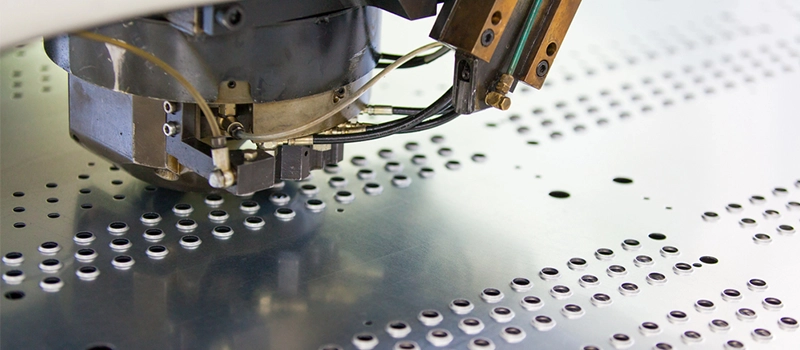
What Is Punching in Sheet Metal Fabrication?
Punching removes material from a sheet by applying downward pressure from a punch tool into a die cavity. Unlike cutting, punching does not follow continuous lines — instead, it creates discrete holes and forms with clean edges.
Punching is typically performed after cutting and before bending or welding in the sheet metal fabrication process flow.
Types of Punching Techniques
Different shapes and needs call for different punching approaches:
Round and Slotted Holes
Most common type — for fasteners, cable routing, or ventilation. Hole diameter and placement are tightly controlled.
Embossing and Louvers
Raised features are formed into the sheet for structural stiffness or airflow. Done using special forming tools on CNC punching machines.
Knockouts and Bridge Slots
Used for electrical boxes and modular panels. Pre-cut sections that can be easily removed on site.
Equipment Used for Punching
Efficient and precise punching requires:
- CNC turret punching machines: Equipped with multiple tool stations, great for varied hole patterns
- Mechanical punch presses: Suited for high-speed and repetitive work
- Custom punch + die sets: For unique shapes or industry-specific requirements
- Servo-electric presses: Used in high-precision, environmentally controlled production environments
Advantages of Punching in Sheet Metal Fabrication
- Speed: Processes hundreds of holes per minute
- Consistency: Repeatable accuracy even in large batches
- Material Versatility: Works with stainless steel, aluminum, copper, galvanized steel
- Integration Ready: Combines well with forming, bending, and PEM insertion steps
- Cost-effective: Low tooling cost per part, especially in bulk orders
When properly executed, punching is not only about making holes — it’s about preparing parts for functional integration in the full metal sheet fabrication process.
Bending – The Structural Shaping Step in Sheet Metal Fabrication Processes
Bending is one of the most essential steps in sheet metal fabrication processes, where flat metal sheets are formed into three-dimensional profiles. This process gives structural integrity, geometric function, and dimensional precision to parts used in nearly every industry — from electrical enclosures to mechanical brackets.
In most sheet metal fabrication processes, bending occurs after cutting and punching, and before welding or assembly. It’s the point where metal begins to take its functional shape.

What Is Bending in Sheet Metal Fabrication Processes?
Bending involves applying force along a straight axis to plastically deform the sheet metal and create precise angles or curves. The metal is positioned between a punch and a die and then pressed into shape using a press brake.
In custom sheet metal fabrication processes, the accuracy of each bend is critical to ensure downstream alignment during welding or final assembly. Poorly executed bending can lead to misfit, warping, or functional failure.
Types of Bending Techniques in Fabrication
Multiple bending methods are used within sheet metal fabrication processes, depending on the angle, material, and desired shape.
V-Bending
- The most common bending method
- The punch presses the sheet into a V-shaped die
- Used for angles between 30° and 135°
U-Bending
- Creates U-channel profiles, often used for structural supports
- Requires deeper tooling and higher tonnage
- Common in enclosure and frame construction
Air Bending
- The punch does not fully contact the die, allowing adjustable angles
- Widely used in flexible sheet metal fabrication processes
- Saves tooling cost and setup time
Bottoming
- The punch fully bottoms out into the die, locking in the exact angle
- Offers high accuracy and repeatability
- Useful for parts that must maintain tight tolerances
Each method supports a different range of products in the sheet metal fabrication workflow, from high-precision components to simple frames.
Equipment Used for Bending in Sheet Metal Work
Consistent bending quality in sheet metal fabrication processes depends on proper tooling and control systems:
- CNC press brakes for precise control over angle, depth, and length
- Hydraulic press brakes for high-tonnage forming of thicker sheets
- Custom forming dies based on part geometry and material behavior
- Offline programming software to simulate bending sequences and minimize errors
These tools ensure accuracy and efficiency, especially in high-mix, low-volume custom sheet metal fabrication processes.
Advantages of Bending in Sheet Metal Fabrication
Bending adds critical value to fabricated components across industries:
- No need for joints or fasteners – one-piece forming strengthens the structure
- Clean, seamless profiles – ideal for visible or high-precision parts
- Supports complex geometries – integrates with other processes like welding and riveting
- Maintains material strength – when done within proper bend radii
- Highly repeatable – CNC bending ensures consistency across batches
As part of the complete set of sheet metal fabrication processes, bending is the stage where material becomes meaningful — where flat sheets transform into functional forms ready for final use.
Deep Drawing – Forming Depth Without Seams
Deep drawing is a forming technique that transforms flat sheet metal into hollow or concave three-dimensional parts. Unlike bending, which creates angular shapes, deep drawing forms continuous, smooth, and seamless depth — perfect for components that need strength, containment, or aesthetic appeal.
This process is common in the production of housings, enclosures, metal containers, and components that must hold fluids, withstand pressure, or maintain an unbroken surface.
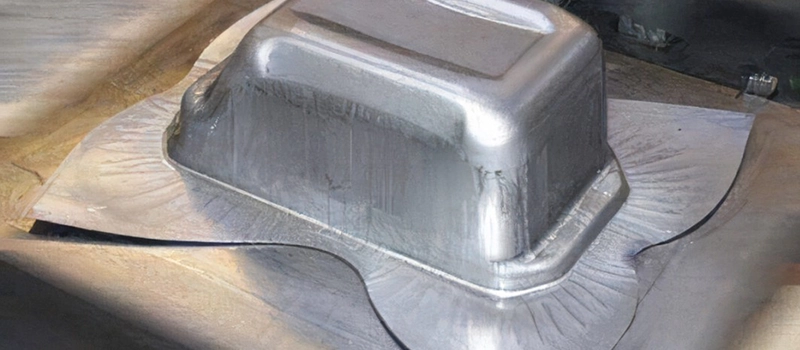
What Is Deep Drawing in Sheet Metal Fabrication?
Deep drawing involves clamping a metal sheet over a die and then pushing it into the cavity using a punch. The metal flows radially into the die, stretching and forming the final shape in a single press stroke or through multiple redraws.
It’s considered a cold forming process and often used when the desired depth exceeds the part’s width, especially in cylindrical or box-like components.
Deep drawing is typically integrated mid-way through the metal sheet fabrication process, often replacing the need for welding or assembly in parts that can be formed in one piece.
Types of Deep Drawing Methods
Different applications call for specific drawing techniques:
Cylindrical Drawing
Used to produce round, cup-like shapes such as automotive housings, filter casings, or cookware.
Rectangular Drawing
Used for square or box-shaped components such as battery cases, junction boxes, or metal trays.
Redrawing
Used when a deep-drawn part needs to be further extended. The part is redrawn through successive dies to reach greater depth.
Reverse Drawing
The part is drawn back in the opposite direction to refine shape or strengthen walls. Often used in precision components.
Equipment Used for Deep Drawing
This process requires robust and highly accurate press systems:
- Hydraulic or mechanical drawing presses
- Drawing dies and punches made of hardened steel
- Blank holders to control metal flow and avoid wrinkling
- Lubrication systems to reduce friction and prevent tearing
Advanced simulations (FEA) are often used to test draw ratios and predict thinning zones before tooling is built, ensuring quality and consistency in the sheet metal fabrication process flow chart.
Advantages of Deep Drawing
- Seamless parts: No welds, reducing leak points and failure risks
- Stronger structures: Uniform thickness and continuous geometry
- Aesthetic finish: Smooth contours ideal for exposed or consumer-facing components
- Reduced part count: Eliminates the need for multiple assembled pieces
- Cost-effective in volume: Especially when producing high-quantity runs
In the process for custom sheet metal fabrication, deep drawing offers unmatched value when you need high strength, clean design, and minimal post-processing.
Welding – The Backbone of Sheet Metal Fabrication Processes
Welding plays a critical role in sheet metal fabrication processes, enabling the creation of strong, permanent joints between individual metal parts. It turns separate cut, punched, or bent components into a single, integrated product that can withstand stress, vibration, and wear.
In many sheet metal fabrication processes, welding is the final step that gives the assembly its full structural form. Whether you’re fabricating machinery frames, enclosures, or industrial housings, precise welding ensures both performance and durability.
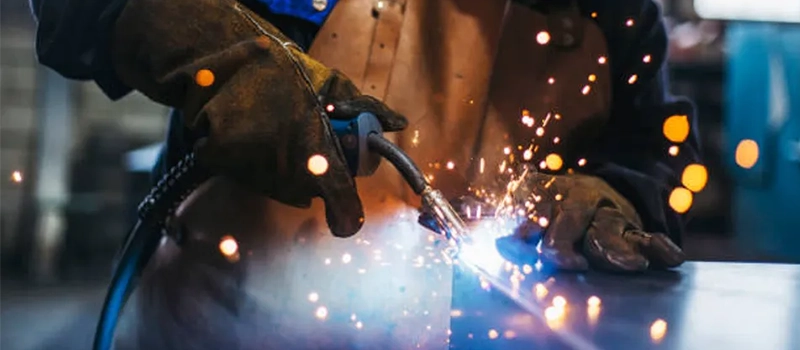
What Is Welding in Sheet Metal Fabrication Processes?
Welding is the process of fusing metal parts by applying heat, pressure, or both. In sheet metal fabrication processes, it is typically performed after cutting, punching, and bending — when the components are ready for permanent assembly.
Because sheet metal is often thin, controlled welding techniques are essential to prevent warping, distortion, or surface damage.
Types of Welding in Sheet Metal Fabrication
Depending on the part requirements, different welding methods are used in modern sheet metal fabrication processes:
TIG Welding (Gas Tungsten Arc Welding)
- Offers clean, precise welds with excellent aesthetics
- Ideal for aluminum and stainless steel
- Requires skilled operators and slower travel speeds
MIG Welding (Gas Metal Arc Welding)
- Faster and easier to automate
- Common in industrial sheet metal fabrication for mild steel
- Strong welds with moderate appearance quality
Spot Welding
- Uses electrical resistance to fuse overlapping sheets
- Efficient for high-volume production lines
- Ideal for automotive parts, appliances, and steel cabinets
Laser Welding
- High-precision process used in advanced sheet metal fabrication processes
- Produces minimal heat-affected zones
- Best for electronics, medical devices, and intricate assemblies
Each technique contributes uniquely to the final outcome, depending on where welding fits in the complete sheet metal fabrication process flow.
Welding Equipment in Sheet Metal Fabrication
Reliable and high-quality welding in sheet metal fabrication processes requires the right setup:
- TIG and MIG welding machines with adjustable current and wire feed
- Spot welding stations for fast, repeatable joins
- Laser welding units for high-precision applications
- Custom jigs and fixtures to maintain alignment and consistency
- Welding tables and clamps for secure positioning
Well-planned fixturing is especially important in custom sheet metal fabrication processes, where tolerances are tight and repeatability is key.
Advantages of Welding in the Fabrication Process
Welding offers major benefits across various sheet metal fabrication processes:
- High structural strength – creates rigid, long-lasting connections
- Design flexibility – supports complex geometries and frame structures
- Visual cleanliness – welds can be ground flush for smooth finishes
- Reduced part count – eliminates the need for fasteners or mechanical joints
- Automation-ready – integrates with robotic welding systems in modern workshops
When properly executed, welding is more than just a joining method — it’s the stage that gives form, function, and durability to everything that precedes it in the sheet metal fabrication processes chain.
Riveting – The Cold Joining Method in Sheet Metal Fabrication Processes
Riveting is a mechanical fastening method used in sheet metal fabrication processes when welding is not suitable. It joins multiple metal components by applying pressure to rivets or threaded inserts, securing them without heat.
Riveting is especially important in applications where parts must be removable, made from dissimilar metals, or exposed to heat-sensitive environments.
This method ensures strong, reliable connections while preserving material properties — making it an essential option in custom sheet metal fabrication processes.
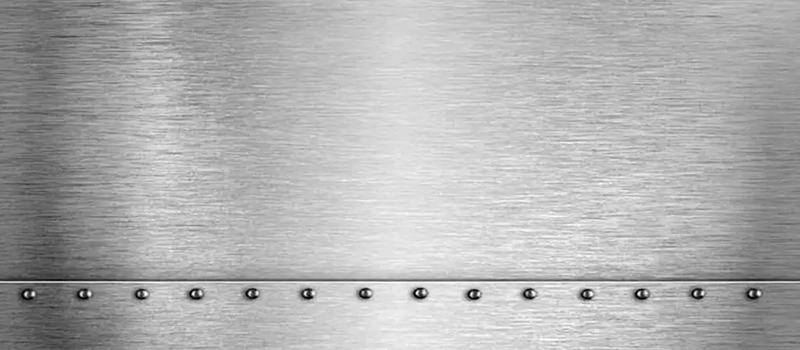
What Is Riveting in Sheet Metal Work?
Riveting joins metal sheets by inserting a rivet or fastener through pre-punched holes and deforming one end to lock the joint in place. Unlike welding, no melting occurs, which prevents distortion and material fatigue.
In modern sheet metal fabrication processes, riveting is widely used for enclosures, electrical cabinets, control panels, and any product requiring disassembly or modular design.
Types of Riveting Used in Fabrication
Each type of rivet or fastener serves a different purpose within metal joining operations:
Blind Rivets (Pop Rivets)
- Installed from one side only
- Useful in closed or tight spaces
- Fast and easy to apply
Solid Rivets
- Traditional aerospace and industrial use
- Requires access from both sides of the part
PEM Fasteners
- Include self-clinching nuts, studs, and standoffs
- Installed using pressure, often during or right after punching
- Common in electronic enclosures and panels
Clinching
- Joins sheets by cold-forming a mechanical interlock
- No hardware required
- Clean, cost-effective, and ideal for thin materials
These methods are selected based on part function, load-bearing needs, and how the joining step fits into your overall sheet metal fabrication processes.
Need Help? We’re Here for You!
Tools and Equipment for Riveting
High-quality riveting in fabrication requires:
- Pneumatic or hydraulic rivet guns
- Press-insertion machines for PEMs
- Custom dies and anvils for precision clinching
- Fixture systems for positioning and repeatability
These tools integrate seamlessly with other forming and fastening steps in automated sheet metal fabrication processes.
Advantages of Riveting in Sheet Metal Work
- No heat distortion – preserves coatings and dimensions
- Great for thin or delicate sheets
- Fast assembly – ideal for mass production
- Disassembly-friendly – useful in repairable or serviceable products
- Compatible with pre-finished surfaces – no post-processing needed
Riveting completes the full set of sheet metal fabrication processes by offering a fast, clean, and reliable way to join parts where welding may not be ideal.
Conclusion
Understanding these six core sheet metal fabrication processes—cutting, punching, bending, deep drawing, welding, and riveting—provides a clear view of how raw metal becomes precision-engineered products. Each process plays a vital role, and together, they form the foundation of high-quality, cost-effective metal manufacturing.


